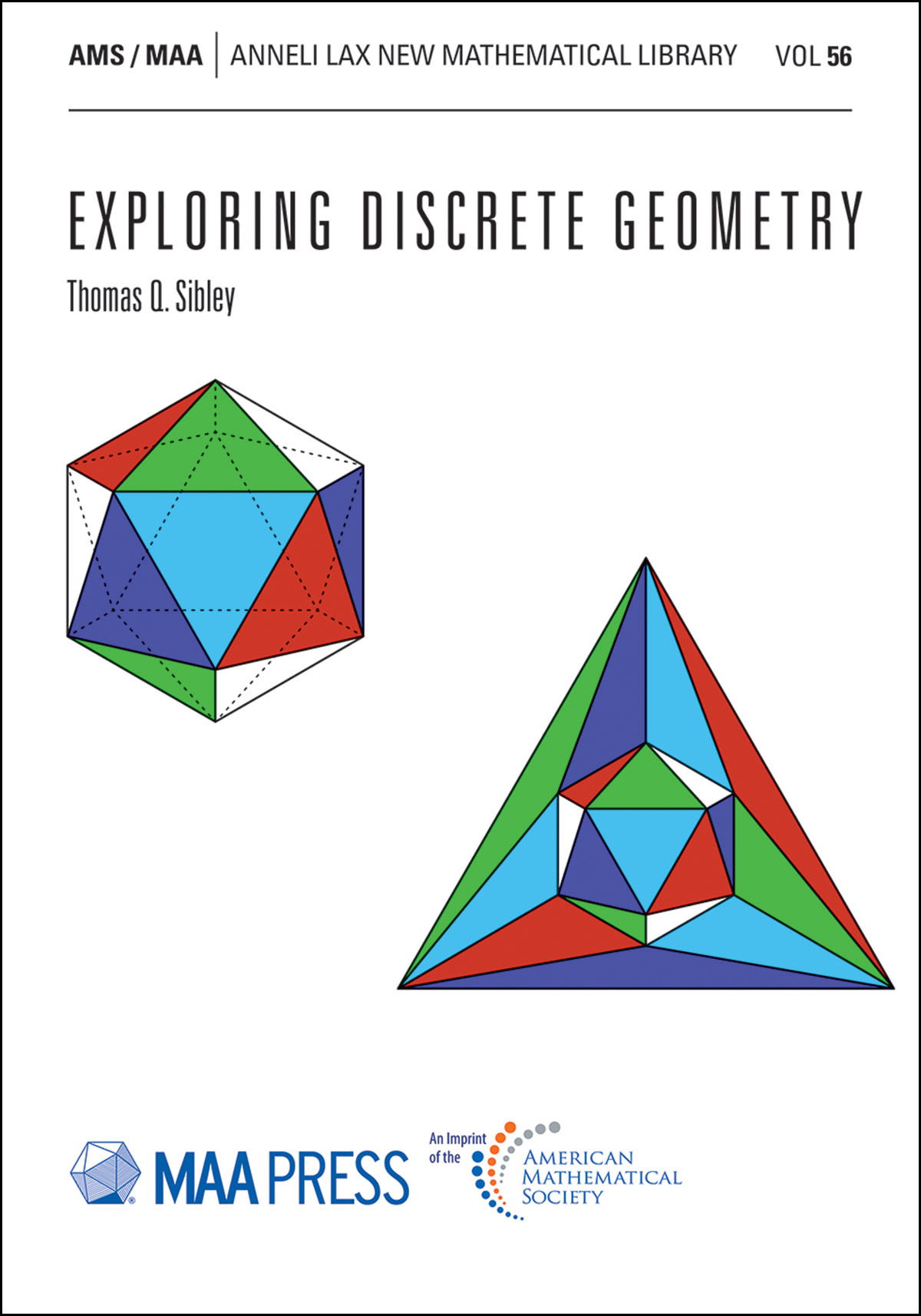
- Author: Thomas Q. Sibley
- Series: Anneli Lax New Mathematical Library
- Publisher: American Mathematical Sciences
- Number of Pages: 156
- Format: Paperback
- Price: $51.75
- ISBN: 978-1-4704-7807-0
- Category: gen
[Reviewed by Bill Satzer , on 03/11/2025]
Discrete geometry is field that lies on the edge of traditional geometry and incorporates a touch of combinatorics. It studies discrete sets of points, lines, curves and other familiar objects but often with an emphasis on various arrangements of those elements. Counting or optimizing configurations of those pieces is also an important component.
This book requires no more than high school mathematics, and is limited to basic knowledge of geometric and algebraic concepts. It is broadly accessible, and the author takes pains to develop the main ideas in carefully calibrated steps. Each of four chapters follows the same pattern of topics, beginning with lines and regions, then diagonals and triangulations, art gallery problems, geometric patterns, and so on. Material in succeeding chapters builds on the prior ones by examining more complex versions of the same kinds of problems.
The author begins with some simple interesting questions and problems that include a basic version of the “art gallery” problem of providing enough guides to see everywhere in a museum. The following chapters answer questions posed earlier, and then raise some more with greater complexity that need ever more enhanced treatment. The pattern is “answer the question, then question the answer”.
The book would appeal to all kinds of readers. Other books in this series from the MAA aim to get high school students excited about mathematics. This one does that very well, but might also appeal to the math-adverse. There is strong visual component to most everything here. The figures are attractive, well-chosen and nicely done. There are proofs, and mathematical induction is introduced, but with a light touch.
The author provides not only a bibliography but also a suggested reading list. This gives readers a path to explore topics from the book in greater depth and detail.
Bill Satzer (bsatzer@gmail.com), now retired from 3M Company, spent most of his career as a mathematician working in industry on a variety of applications. He did his PhD work in dynamical systems and celestial mechanics.
